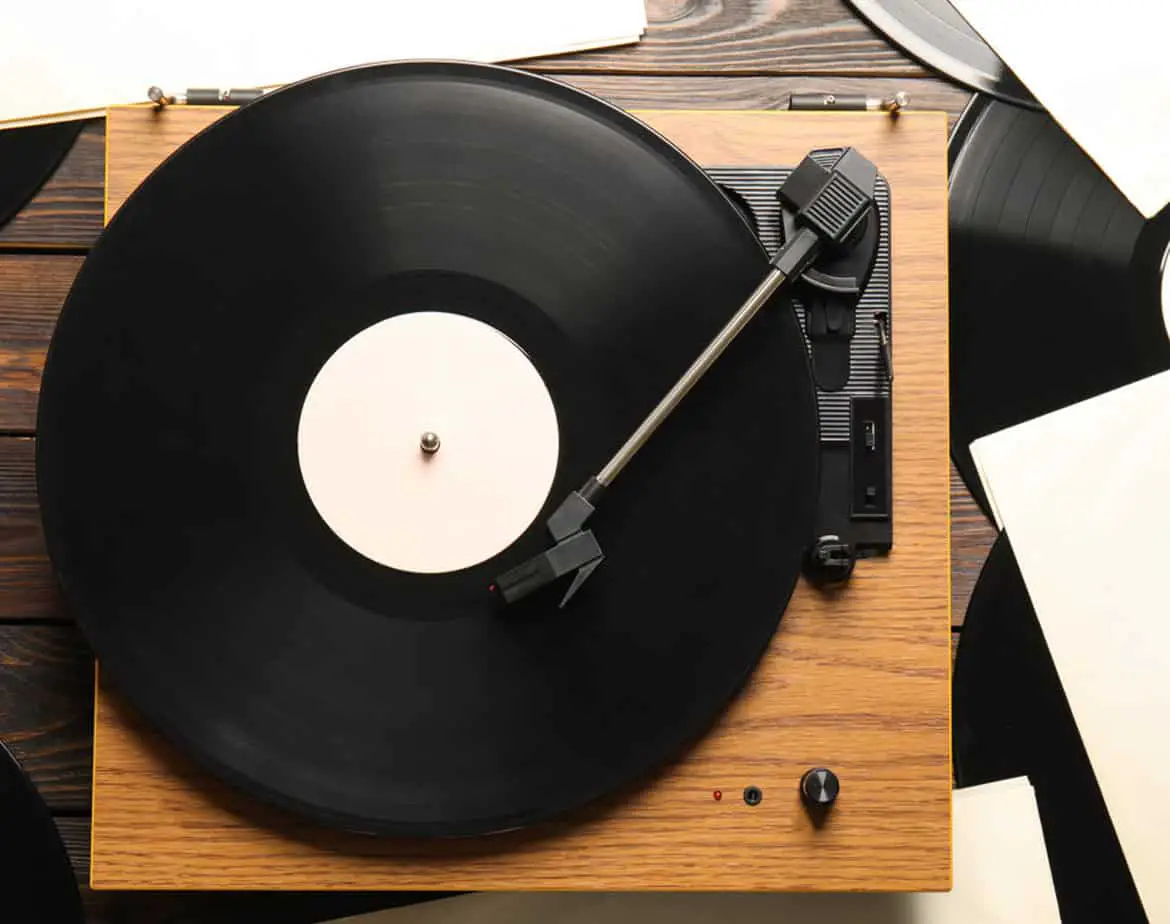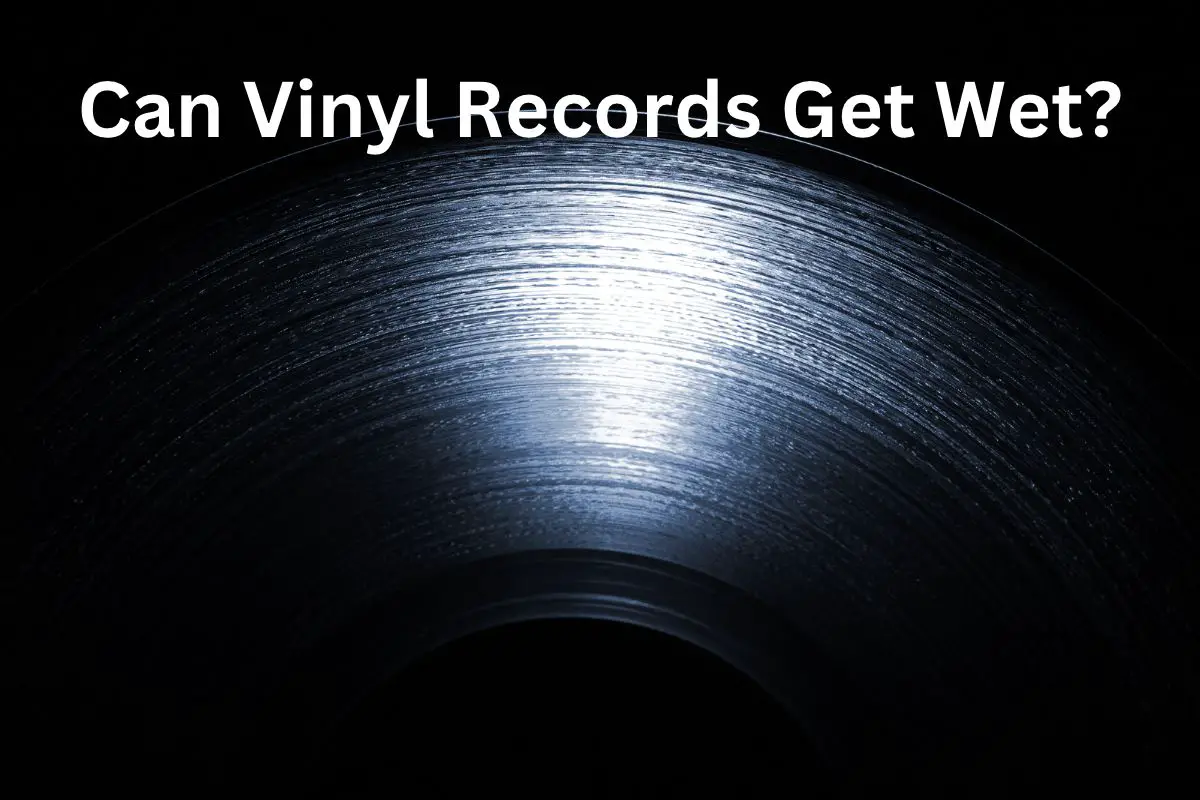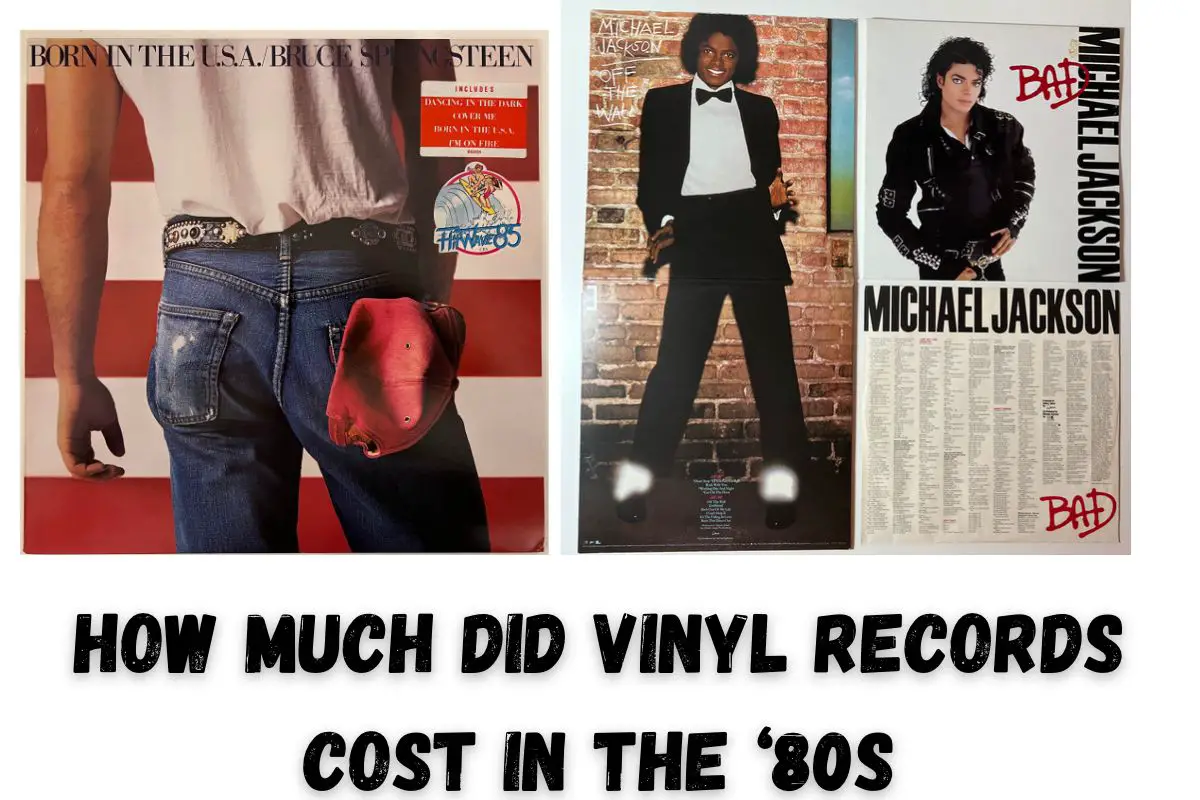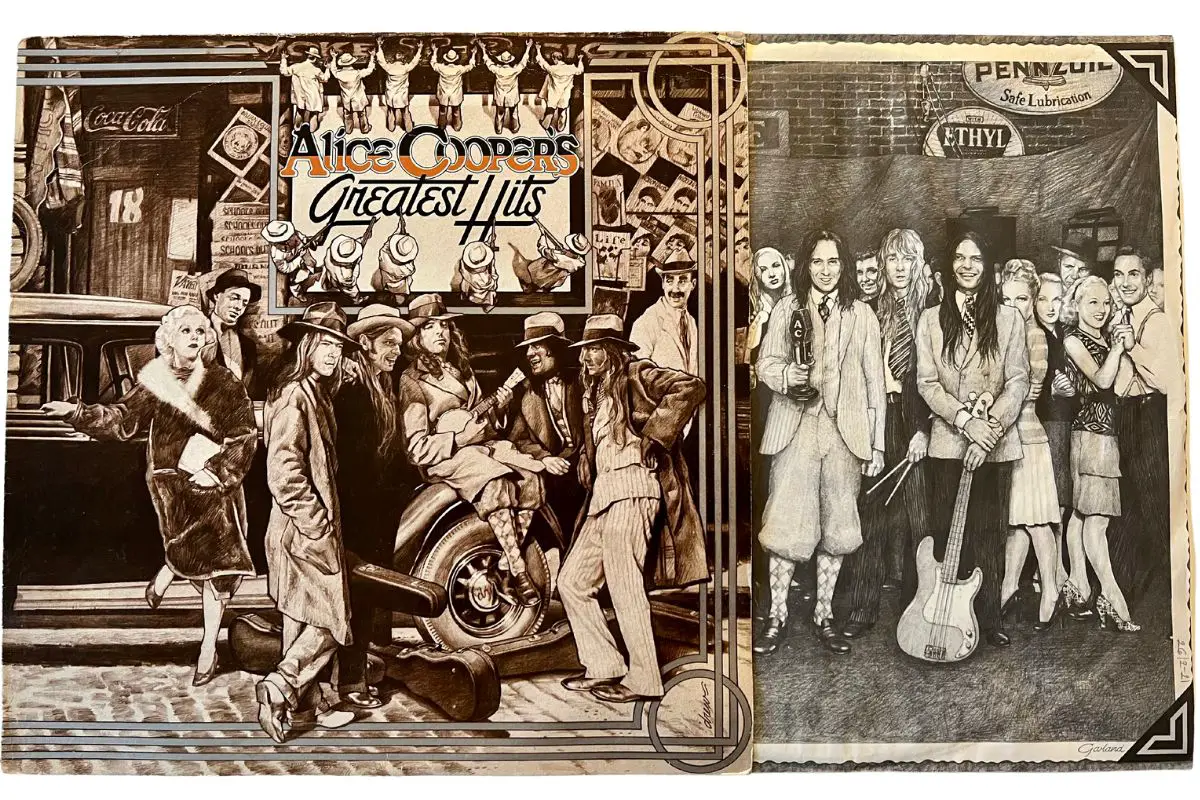This post contains affiliate links.
Nothing spells out more vintage and class than a spinning phonograph record playing a song on a recorder. The mystique of a spinning black vinyl record on a needle adjuster, and the sound production, makes the experience all the more attractive in a digital music age.
Most Vinyl records are black, mainly because of the Carbon detailing and heavy metals (Initially Cadmium, Lead, Tin, and now Zinc) additions during their manufacturing. These additives stabilize the Polyvinyl Chloride (PVC) disk, giving it desirable qualities like low flammability and melting point.
We’ll look at the origins and how a vinyl record really works. Also, we’ll demystify the familiar visual resemblance that seems to characterize most vinyl records and answer the question, “Why are vinyl records black?”
Table of Contents
What Are Vinyl Records?
Vinyl records are disks that store analog music formats inscribed and embedded on circular grooves that characterize the disk. These records are played on a phonograph or a turntable.

There are two types of sound formats inscribed on these circular disks: long play (LP) and extended play (EP).
What’s most interesting about the Vinyl record is that you can record and reproduce sound on both disk surfaces, namely side A and B.
Sound Formats of the Vinyl Records
The format in use usually determines the rotation speed of the vinyl record on the player.
Long Play Format
The Long Play format in vinyl records, plays at 33.5 rotations per minute (RPM). The LP disk is about 12 inches (30.48 cm) in diameter. This format typically holds between 30 and 44 minutes of sound after recording both sides.
Even though the shift from analog to digital music formats came with the decline in records and the rise of the compact disk, the terminology “long play” remains in use in the music industry to imply an entire album.
Usually, an album comprises between ten and twelve songs at most.
Extended Play Format
On the other hand, Extended Play Vinyl records (EP) have a play rate of 45 rotations per minute. The disk format can hold only one audio song per side, typically up to 7.5 minutes long. Therefore, an EP holding audio on both sides means only 15 minutes of song play. This aspect implies that the EP contains only half the sound capacity of the LP.
The EP vinyl record has a diameter of 10 inches (25.4 cm). In modern-day music, Extended Play (EP) denotes a single song released by an artist.
Interestingly, before, a 7 inches (17.78 cm), 45 RPM EP disc was eventually surpassed, which led to the production of the 10 inches (25.4 cm) EP records, suitable for singles.
The History of the Vinyl Record
Initially, Vinyl records were made of rubber, later replaced by shellac (wax) pressed into a disk, with circular grooves on both sides of the disk. This technique was Emile Berliner’s advancement of Thomas Edison’s prototype phonograph that recorded sound on a cylinder of tin folds in the late 1800s. Berliner’s shellac disk resulted in the naming of phonographs to gramophone records.
However, in the mid-’70s onwards, PVC became the way to go in making records. This aspect would proceed until Compact Disks surpassed Vinyl records in the ’90s.
Recently, there has been a hype about vinyl records, as indicated by sales, showing that this vintage technology might be returning to the music scene.
Related article: Record Player History: The Rise And Fall (And Rise) Of Turntables
What Are Vinyl Records Made of?
Initially, records were made of Shellac wax, a hydrocarbon. However, it was replaced by PVC due to its brittle nature. Further, the use of PVC records helped reduce noise compared to shellac.
This development was later advanced to the more dominant PVC records, which required the addition of Carbon and heavy metals to stabilize the plastic.
These PVC records offered better cost-effectiveness, durability, reduced statistical charges, to mention a few function-attractive qualities.
As a result, these additives, like Carbon and Lead, Tin Chloride, and Zinc, gave the PVC component, which is naturally colorless, a black-colored flair.
Is Vinyl Environmentally Friendly?
Initially, there were concerns about the environmental impacts of vinyl records. The main problems stem from the heavy metals and other stabilizing additives that were particularly degrading and toxic to the environment and users.
Even though there are regulations that oversee allowable additives in the production of PVC records, the manufacturing process still poses a danger to the environment. This exposure arises due to the release of toxic and potentially carcinogenic dioxins during PVC manufacture.
There has been experimentation of plastics like PET from recycled bottles to obtain more environmentally conscious alternatives. However, the sound quality is reported to be lower.
That said, the odds of disposing of vinyl discs are significantly low, especially now that its perceived market value is rising.
Although there’s some level of concern about the ecological nature of vinyl records, it’s no cause for alarm; that’s because the existing records and annual production of these records don’t account for much of the plastic production and disposal worldwide today.
You can read more about vinyl records and the environment in this article that I wrote: Are Vinyl Records Recyclable? Let’s Find Out!
How do Vinyl Records Work?
Vinyl records work by converting sound vibrations imprinted on grooves into sound waves. The three-Dimensional sound waves are imprinted on the grooves on the vinyl disk. The major components of a playback recorder include a stylus needle, cartridge, magnetic coil, cantilever, and body.
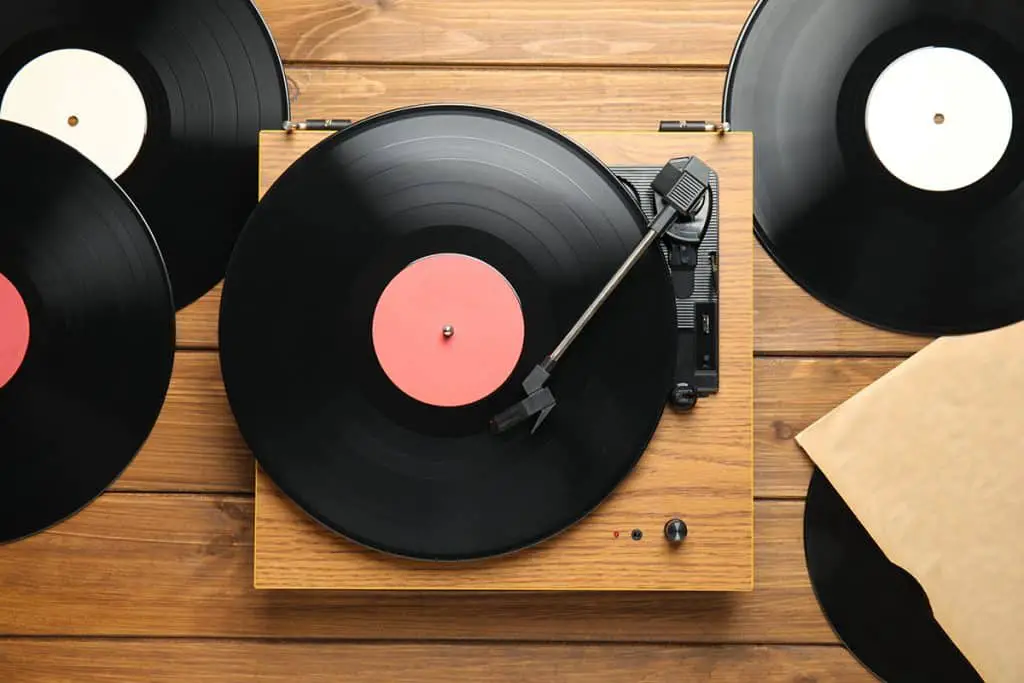
When a stylus needle is placed on a rotating vinyl disk, the mechanical energy of imprinted sound vibrations is converted to sound waves. As the vinyl disk spins, the needle fits in the grooves of the rotating vinyl record, collecting and transferring the sound vibration via a cartridge. The cartridge transduces mechanical sound vibrations to electrical energy directed to amplifiers, then to speakers to display the playing sound.
How To Use a Vinyl Record Player
Here are the steps on how to use a vinyl record player:
- First, it’s always important to lock the Vinyl record on the turntable to ensure it’s properly secured. It’s essential to understand the rotations per minute of the vinyl record disk before using a record player. It’s typical for a 12 inch (30.48 cm) vinyl record to play at 33.5 RPM on most record players.
- Then, raise the record player’s arm, switch on the equipment, and slowly lower the arm to touch the rotating vinyl disk. When the needle contacts the circulating vinyl disk, the sound transmits to the speakers, and we can hear the song play.
- To skip a track, you raise the record player’s arm and place it on the grooves, past or before the point it was initially playing, to forward or rewind the track, respectively.
The Vinyl Comeback
There’s been a resurgence in the sales of vinyl records since 1991. The growth in revenue due to direct sales of Vinyl records has grown significantly and consecutively since 2010. Interestingly, vinyl record sales have surpassed compact disk sales.
Most might think that the boomers generation caused the rebirth. However, this demand growth is partly driven by millennials who want to tap into the old-fashioned way of experiential listening.
In a world bombarded with music streaming platforms, it must be nice to sit down and let a Vinyl record play on the phonograph.
Final Thoughts
There’s not much functional significance in the black color of the Vinyl record, other than the stabilizer additives used in producing Polyvinyl Chloride record disks.
Perhaps, from a visual standpoint, it’s how we can identify a vinyl record original as presented by the initial founders of the recording technology.
However, the color has minimal impact on the quality of sound of the record upon playback.
VacationVinyl.com is a participant in the Amazon Services LLC Associates Program, an affiliate advertising program designed to provide a means for sites to earn advertising fees by advertising and linking to Amazon.com. We also participate in other affiliate programs which compensate us for referring traffic.

